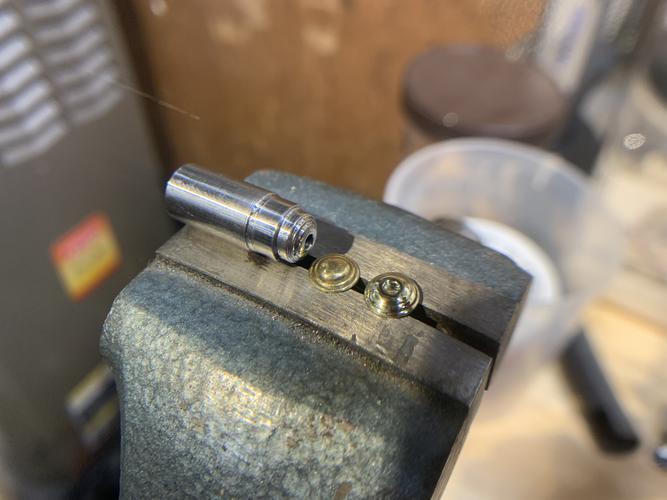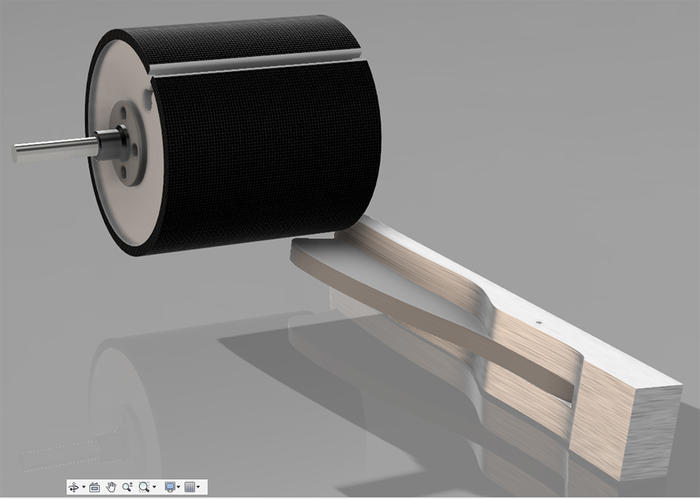Results 21 to 30 of 98
Thread: An idea for a contact grinder.
-
03-08-2019, 11:43 PM #21

I do like the blade shape... I'm thinking you have a lot of learning ahead which will be exciting, frustrating and rewarding.
Good luck
-
The Following User Says Thank You to JOB15 For This Useful Post:
Voidmonster (03-08-2019)
-
03-08-2019, 11:46 PM #22
-
03-09-2019, 12:57 AM #23

Is there some sort of guide that follows the stiddie stick? (other than the drum sander itself)
-
03-09-2019, 02:12 AM #24
 -Zak Jarvis. Writer. Artist. Bon vivant.
-Zak Jarvis. Writer. Artist. Bon vivant.
-
-
03-09-2019, 02:37 AM #25

You’re doing a rattler grind? I envisioned a hollow grind. Your template makes way more sense now.
-
03-09-2019, 02:40 AM #26
-
03-09-2019, 02:52 AM #27

A fixture made of Corian counter top material would be sturdy and allow the use of hardware. Also, it can be machined with normal wood working equipment.
YMMV
~Richard
Local cabinet supply house could help locate sufficient atcha low cost.Be yourself; everyone else is already taken.
- Oscar Wilde
-
The Following 2 Users Say Thank You to Geezer For This Useful Post:
MikeT (03-10-2019), Voidmonster (03-09-2019)
-
03-09-2019, 05:22 PM #28

Maybe a thin piece of metal across the wood guide to cut down on it changing from use? Rattler. Ok. I got it now. Otherwise it was going to be a REAL wedge!
It's just Sharpening, right?
Jerry...
-
The Following User Says Thank You to Gasman For This Useful Post:
Voidmonster (03-10-2019)
-
03-09-2019, 10:53 PM #29

That makes more sense now. Thanks for sharing the method.
-
The Following User Says Thank You to tintin For This Useful Post:
Voidmonster (03-10-2019)
-
03-10-2019, 01:28 AM #30

Monday I’m gonna call some of the local countertop places and see if they’ve got any Corian cutoffs I can use, because that is a great idea!
I also may just make it on the mill out of a block of aluminum. Still pondering my options.
Just now I relalized I can just cut a piece off the block I cut the blades from to get the spine shape for fitting without doing anything fancy with cuting this gizmo out.
Things are slowed because I don’t have a dust collection system, and the weather hasn’t really been cooperative enough to roll the drill press outside and grind out there.
So, I’ve been doing some work on making punches for washers.

The method I settled on for these was to get the rough dimensions using the lathe tools, then doing all the rounded bits by using a file on the part while it’s spinning, then smoothing it all out with some sandpaper.
I settled on an unusual way of making a negative mold using a block of solder and some sheet metal.
Basically, I spin the cut die into the solder until it melts down to the right depth, then I stick a piece of galvanized steel under the die then sqush those together while it’s spinning until the solder gets hot enough to braze onto the galvanized metal which has been polished smooth by my cut die.
THEN I can stick the brass sheet between the two and get a really clean impression.
The next step is to make a proper, compact piece that has a punch that slides into it to knock out the center hole. I’ve made the second punch, but haven’t had a chance to make the part that holds the solder & sheet metal.
It sounds very complicated, but it’s really pretty simple and a surprisingly effective way of making a negative mold.
Also, heat treat. I should probably heat treat at least the punch die.Last edited by Voidmonster; 03-10-2019 at 01:32 AM. Reason: Wrong picture
-Zak Jarvis. Writer. Artist. Bon vivant.
-
The Following 5 Users Say Thank You to Voidmonster For This Useful Post:
Geezer (03-10-2019), jfk742 (03-10-2019), JOB15 (03-10-2019), MikeT (03-10-2019), randydance062449 (03-10-2019)


 318Likes
318Likes LinkBack URL
LinkBack URL About LinkBacks
About LinkBacks






 Reply With Quote
Reply With Quote




